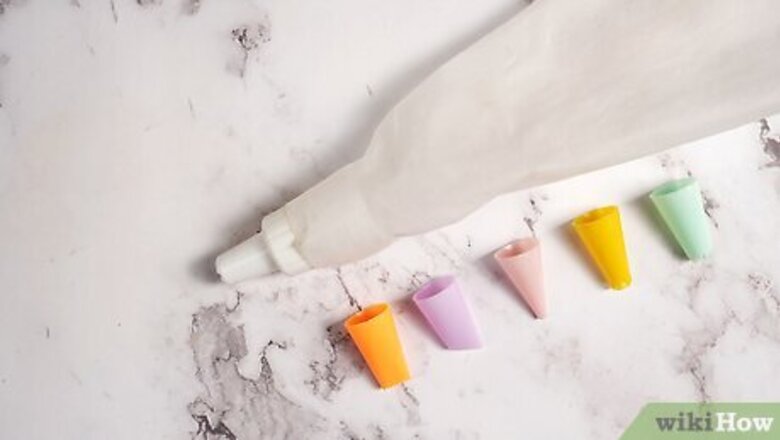
views
Finding or Making a Piping Bag
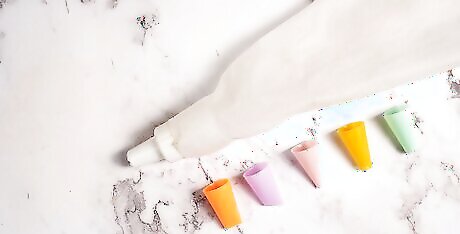
Determine what type of piping bag you’d like to use. You can purchase professional piping bags at a bulk store or online, you can make your own piping bag out of parchment paper, or you can use a ziploc-type baggy as a piping bag. Any of these options will work effectively, however, you’ll need to buy a professional piping bag if you want to use fancy piping tips. You can pipe melted chocolate using any of these options. It’s best to use a professional piping bag for piping chocolate frosting, as you’ll need to use the fancy piping tips due to the frosting’s thickness. Professional piping bags come in disposable plastic or reusable canvas or silicone.
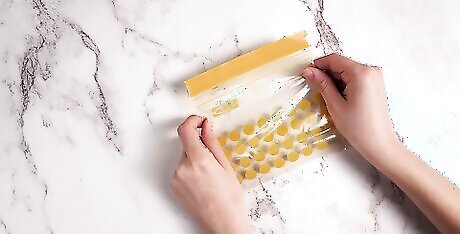
Use a plastic ziploc-type bag instead of buying or making a piping bag. The easiest way to use a plastic ziploc-type bag as a piping bag is to microwave the chocolate in it. Once the chocolate is melted inside the bag, use your hands to push all the melted chocolate to one corner. Then, cut a small hole in that corner and start piping. Be careful when you take the bag out of the microwave, as the chocolate will be hot. You may need to use oven mitts when handling the bag initially.
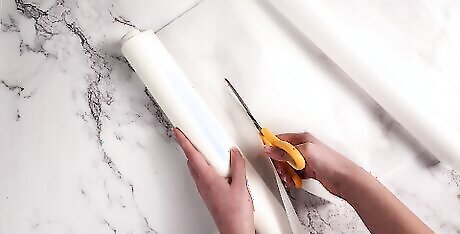
Make your own piping bag using 18 inches (46 cm) of parchment paper. Ensure all four sides of the parchment paper rectangle are even. Use scissors to remove frayed edges if needed. Lay the piece of parchment paper flat on your kitchen counter. Rip off more than 18 inches (46 cm) if the width of your parchment paper is wider than 18 inches (46 cm).
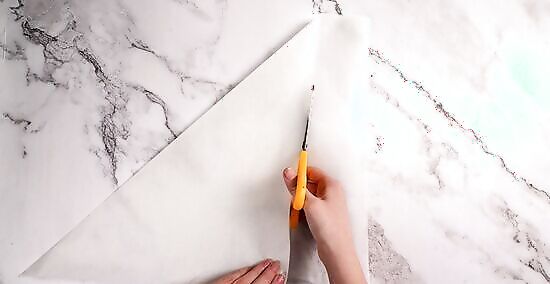
Fold the parchment paper to create a 2-layered triangle. Fold the top-right corner of the parchment rectangle down and lay the right side of the paper flat against the bottom side of the paper. Use scissors to cut off the small rectangular piece of parchment paper. Throw out the rectangular piece of parchment paper. Keep the triangle piece of parchment paper.
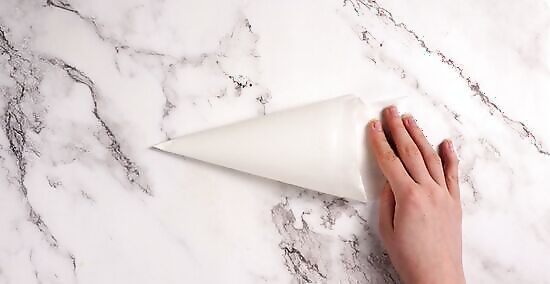
Roll the triangle piece of parchment paper into a cone. Lay the double-layered, triangle-shaped piece of parchment flat on your counter. Use your hands to roll the triangle-shaped paper into a cone. Make sure the paper of the cone is tight enough so that the tip of the cone doesn’t have a hole in it. The final results should be a piece of parchment paper in the shape of an ice cream cone.
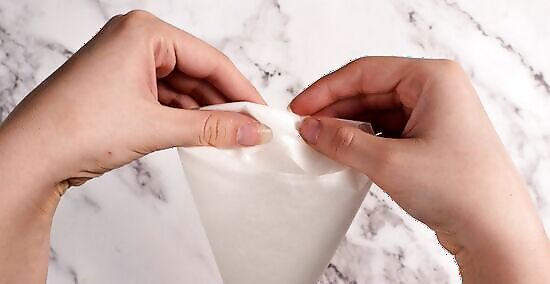
Secure the cone by folding in the paper on the open end. The open-end of the cone, where you’ll eventually pour the melted chocolate, won’t yet be even. It will likely have the edges of the original triangle sticking out. Fold all those pieces into the cone so that the open-end is an even circle. Once the ends are folded inwards, the paper cone should hold the shape on its own.
Selecting the Chocolate
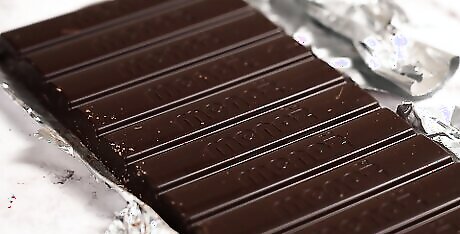
Use bittersweet or semisweet chocolate interchangeably. Bittersweet chocolate has about 70% cocoa, while semisweet chocolate has about 60% cocoa. Their flavours are so close that it’s difficult to tell them apart if you aren’t a chocolatier! Use either kind of chocolate for melting and piping purposes. Both bittersweet and semisweet chocolate tastes ‘normal’ when eaten on its own. Therefore, it can be used in recipes where the chocolate isn’t being mixed with other ingredients.
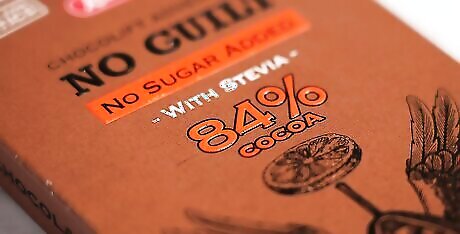
Stay away from unsweetened chocolate for piping decorations. Unsweetened chocolate is very dark and bitter and crumbly in texture. Unsweetened chocolate is mainly used when the chocolate is being mixed with other ingredients, specifically other ingredients that will provide sweetness. Do not use unsweetened chocolate for piping decorations, as it will not taste good when eaten. Cocoa powder is also considered unsweetened chocolate but can be used in small amounts as a finishing detail on cakes or truffles.
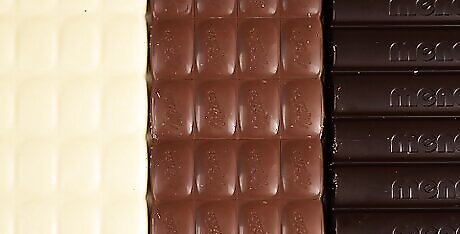
Know the difference between milk, dark, and white chocolate. Dark chocolate is very bitter and has more than 70% cocoa. Milk chocolate typically has between 20-40% cocoa, which makes it more sweet than bitter. White chocolate, on the other hand, is chocolate that is made with cocoa butter and sugar, not cocoa. All three types of chocolate can be used for piping decorations, based on your individual preferences. Dark, milk, and white chocolate go from very bitter to very sweet, respectively.
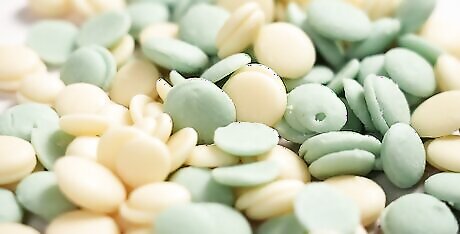
Look for chocolate wafers for easy melting. Chocolate wafers look like small chocolate buttons about a 1 in (2.5 cm) in diameter. You can find chocolate wafers at bulk food stores. All types of chocolate come in wafer form. Wafers are made without stabilizers, which means they melt very easily and do not keep their shape (unlike chocolate chips). If you’re unable to find chocolate wafers to make your chocolate decorations, use chocolate blocks instead. Chop the blocks into smaller pieces before melting them.
Melting the Chocolate
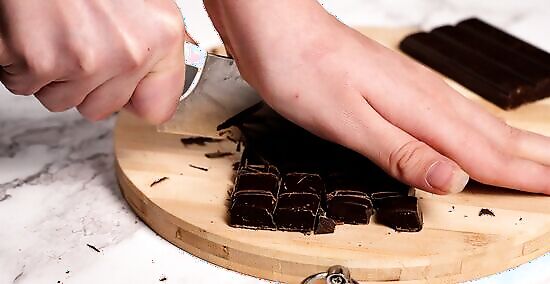
Cut your chocolate, if required, into small pieces. If you’re using chocolate wafers for your decorations, you do not need to cut them or reduce their size. If you’re using chocolate blocks, use a knife to cut the chocolate into small chunks that are about the same size. Alternatively, use a cheese grater to grate your chocolate block, which will melt easily. If your chocolate blocks are too soft to grate, put them in the fridge for 30 minutes first.
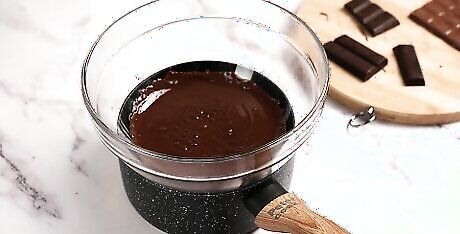
Use your stovetop to melt your chocolate, as one option. Pour water into the bottom of the saucepan and put it on a burner turned to high. Once the water starts to boil, reduce the burner’s temperature so that the water stays simmering, then set the glass bowl inside the saucepan. Place the chocolate you want to melt inside the glass bowl. Allow the chocolate to melt in the bowl without the simmering water touching the bowl. Once melted, turn off the burner and remove the bowl from the saucepan. Make sure the glass bowl you use is for cooking purposes and can be heated. Select a saucepan in which the bowl will fit, without touching the boiling water at the bottom of the saucepan. You may need to use oven mitts to remove the bowl from the saucepan.
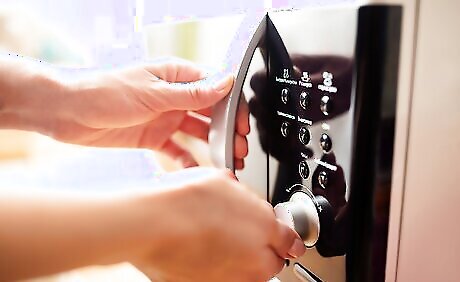
Melt your chocolate in a microwave instead of on the stove. Place the chocolate you want to melt in a glass bowl. Start by melting no more than 125 grams (4.4 oz) of chocolate. Turn the microwave on at a medium level for 1 minute. Check to see how melted the chocolate is, then microwave it for another minute, if required. Repeat this process until the chocolate is completely melted. Be very careful not to let the chocolate burn by microwaving it longer than necessary. If you do burn the chocolate, you can use the burned chocolate to practice your piping rather than eat it.
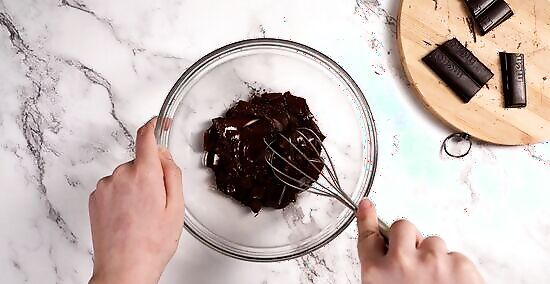
Stir your chocolate after it’s completely melted. Do not stir your chocolate while it’s melting; wait until all the chocolate is completely melted. Once the chocolate is melted, take a large spoon and stir the chocolate until it’s smooth and creamy. Use a smaller spoon to scrape the chocolate off the large spoon and back into the bowl so you don’t waste any.
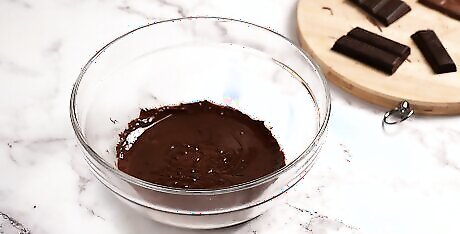
Cool the melted chocolate to room temperature. Leave the bowl with the melted chocolate on your kitchen counter for a few minutes until it cools to room temperature. Hot, newly melted chocolate is too runny to pipe into shapes and letters; it will not keep the shapes. Keep an eye on the melted chocolate while it’s cooling. You want it cool enough to hold its shape when piped, but not cool enough that it’s no longer liquid. If you wait too long, you can remelt the chocolate and try again.
Piping Melted Chocolate Shapes
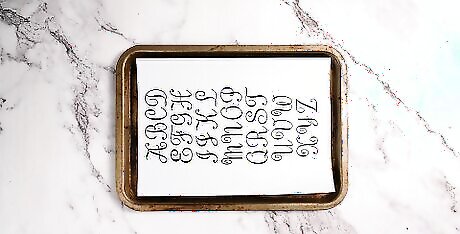
Create decorative shapes and letters with stencils. Decide what kinds of shapes and letters you want to create with the chocolate. Determine if you’re able to create these shapes freehand, or if you’ll need a stencil to help you. If you need stencils, print those stencils onto a regular piece of paper using your printer, or trace them onto a piece of paper using a marker. Put the stencil onto a baking tray. Don’t make the shapes too large in size; stick to shapes that are no more than 2 inches (5.1 cm) across.
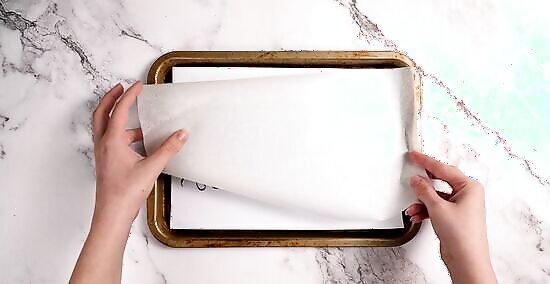
Put a piece of parchment paper on the baking sheet. If you’re using a stencil, you should be able to see the stencil through the parchment paper. If you can’t quite make out the stencil, use a black marker to trace over the patterns on the stencil paper so they’re more visible through the parchment paper. If you’re not using a stencil, just place the parchment paper on the baking sheet. Start with one baking sheet for your chocolate decorations, but feel free to use as many baking sheets as you need.
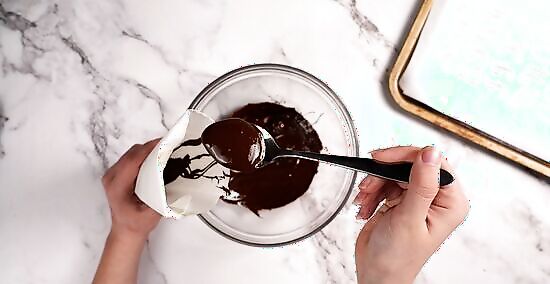
Pour your melted chocolate into your piping bag. Once your melted chocolate is at about room temperature, pour it into your piping bag. Do not fill the piping bag completely; leave about 1 in (2.5 cm) at the top of the bag. Fold-down the end of the piping bag (if it’s made of paper) or twist the end of the bag together (if it’s made of plastic) to secure the chocolate inside. Cut a tiny piece of the top of the bag off with a pair of scissors. If the tip you cut off is too small and makes the lines of chocolate too thin, use the scissors and make the hole a little larger.
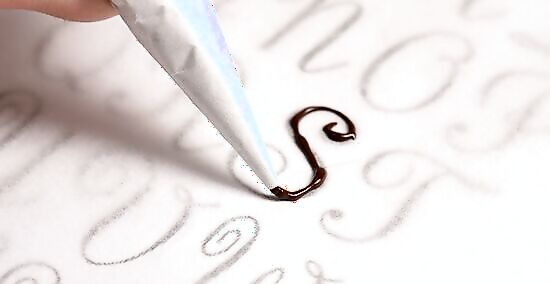
Move your whole arm to draw the chocolate shapes and letters. Hold the piping bag about ⁄4 in (1.9 cm) above the parchment paper while piping. Use only a small amount of pressure to squeeze the chocolate out of the bag. Use the bag like a pen to create the shapes or letters you want, but move your entire arm, rather than just your wrist, when you’re writing. Go slow. Remember, you can eat any of the chocolate you pipe, even if it’s not good enough to use for your decorations! Therefore, feel free to do as many practice rounds as you need. You may find writing letters in cursive to be easier than printing the letters, as you don’t have to pick the chocolate up off the paper as often.
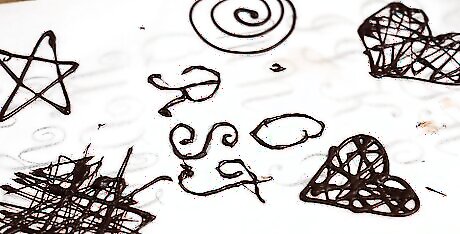
Allow the chocolate shapes to cool and solidify. Either leave the baking sheet on the counter to cool gradually, or place the baking sheet in the fridge for at least 10 minutes to cool quickly. Leave the baking sheet in your fridge for longer than 10 minutes if you need to. You’ll know the shapes are cool and ready to be used once you can pick them up without them bending.
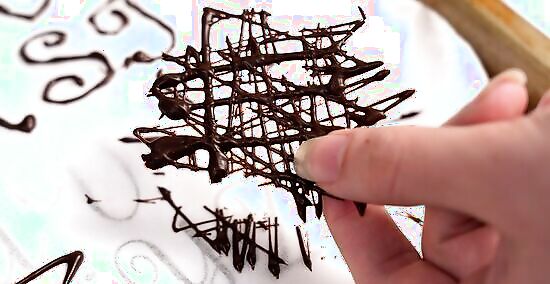
Lift the shapes off the parchment paper with your hands or a spatula. You can peel the chocolate shapes and letters off the parchment with your hands like they’re stickers, or you can lift them off the parchment using a small offset spatula. Either way, go slowly and be careful; you don’t want to accidentally break a piece by lifting or pulling too hard. At this point, the chocolate shapes and letters can be eaten as is or used to decorate something else (like cupcakes).
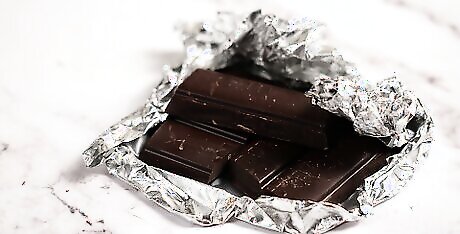
Store your unused chocolate in a cool place to keep it fresh. Do not store your unused chocolate in a warm area of your kitchen, such as a cupboard near your oven, stove, or dishwasher. Store your chocolate in a pantry, if you have one, or even in the basement. Make sure your chocolate is wrapped well in its original packaging and plastic wrap before storing it. If you notice light-coloured spots on your chocolate, this means those parts were exposed to moisture. The chocolate is still edible if this happens. You do not need to store your chocolate in the fridge or freezer unless you have no cool locations in your home (e.g., you live in a very hot climate with no air conditioning).
Making Chocolate Frosting Shapes
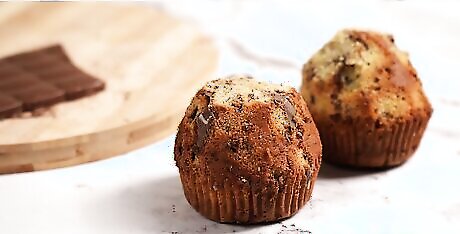
Have your baked items ready to decorate. When piping chocolate frosting, you’ll need to pipe directly onto the baked item (e.g., cake, cupcake). Shapes and letters made with frosting will not keep their shape and therefore cannot be moved. Make sure the baked item you’re decorating is ready to be decorated before continuing. Do not pipe frosting onto baked items that are still warm or the frosting will just melt and run.
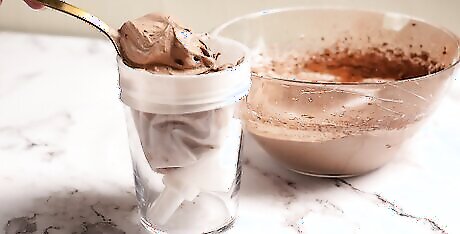
Put the piping tip inside the disposable piping bag, then add the frosting. Most disposable piping bags require the metal tips to be inserted into the bag before you add the frosting. Once the tip is inside the bag and pushed all the way down, cut off the tip of the plastic bag and make sure the tip can stick out of the bag, without falling out. Once the tip is in place, spoon the frosting into the bag. If you can’t hold the bag while filling it, you can put it into a tall glass to hold it in place while you use two hands to add the frosting.
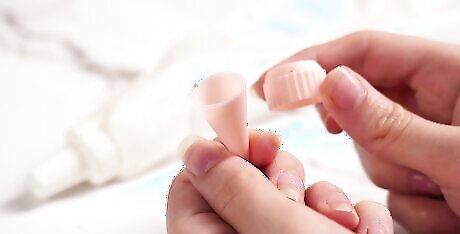
Opt for a ‘coupler system’ so you can change tips while piping. Being able to change piping tips without having to start a new piping bag is very useful. A ‘coupler system’ will allow you to do this. Such a system has an inner piece and an outer piece. The inner piece goes into the disposable piping bag, through a hole cut in the tip of the bag. The piping tip itself goes into the outer piece, which is then screwed onto the inner piece. Once the two pieces are together, you can pipe your frosting. To change tips, simply unscrew the two pieces, remove the old tip, insert a new tip, and screw the pieces back together.
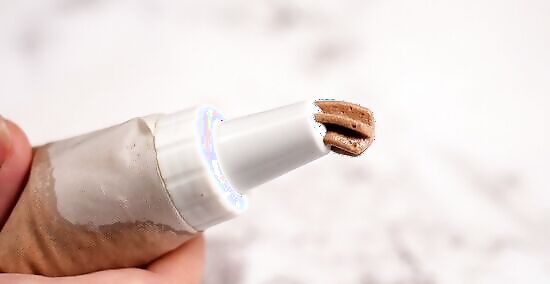
Burp and secure the end of the piping bag once full. The piping bag (regardless of what kind you’re using) should only be filled ⅔ to ¾ of the way full. Use your hands to push the frosting towards the end of the piping bag, like you would with a tube of toothpaste. Twist the top of the bag closed, right at the area where the frosting ends. ‘Burp’ the bag over a bowl or sink to squeeze out any air that may be in the way. You can secure the end of the piping bag with a twist tie if you’d like, or just keep the bag twisted while you pipe. Either way, you’ll be able to reopen the bag to add more frosting if needed.
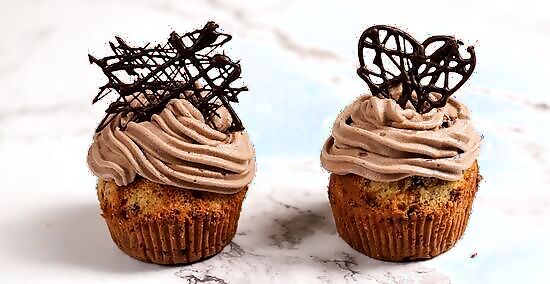
Pipe your chocolate frosting decorations with the piping bag. Hold the end of the bag, where you’ve twisted it closed, with your dominant hand. Use this hand to slowly squeeze the frosting out of the bag and onto your baked item. Use your non-dominant hand to guide the bag while piping and/or to hold the bag steady. Hold the tip just above the surface on which your piping; do not press the tip against the surface. Go slow and steady as you create your various decorations. Place your piping bag into a tall glass when you’re not using it. This will keep your counter clean and the frosting flowing towards the correct end of the bag.














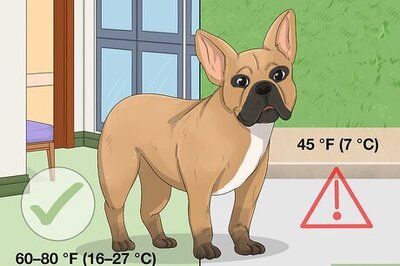
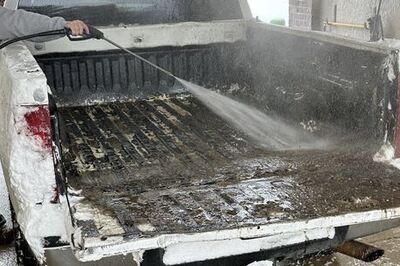
Comments
0 comment